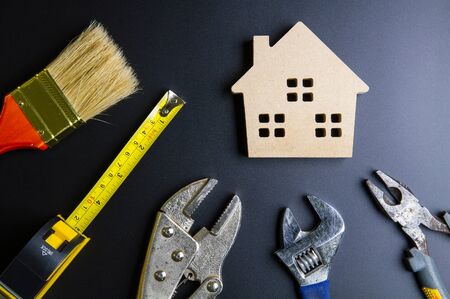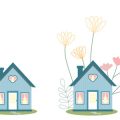Understanding Green Mortgages
Green mortgages, also known as energy-efficient mortgages (EEMs), are special home loan products designed to encourage environmentally friendly and energy-saving features in residential properties. Unlike traditional home loans, green mortgages provide financial incentives for buyers who either purchase energy-efficient homes or make eco-friendly upgrades to existing properties. In the U.S. market, these loans can come with benefits such as lower interest rates, higher borrowing limits, or assistance with funding improvements like solar panels, new insulation, or high-efficiency HVAC systems. The main goal is to support sustainable living while helping homeowners save on utility costs over time. As American homebuyers become increasingly conscious of their environmental impact and long-term savings, green mortgages are gaining popularity as a way to combine responsible homeownership with smart financing options.
Types of Eco-Friendly Financing Options
When it comes to purchasing or upgrading a home with sustainability in mind, American homebuyers have access to a range of eco-friendly financing options. These programs are designed to make green homeownership more accessible and affordable, supporting both new purchases and renovations that improve energy efficiency. Below is an overview of the most popular green mortgage products and other environmentally focused financing solutions available in the U.S. market.
Energy Efficient Mortgages (EEMs)
Energy Efficient Mortgages, or EEMs, are one of the most well-known options for buyers who want to purchase a home that is already energy efficient or who plan to make upgrades after closing. These mortgages allow borrowers to finance the cost of energy-saving improvements as part of their primary mortgage, often resulting in lower utility bills and increased property value.
How EEMs Work
An EEM adds the cost of approved energy-efficient upgrades—such as new insulation, solar panels, or high-efficiency HVAC systems—to your mortgage balance. The additional amount is based on the projected savings from these upgrades, meaning you can qualify for a larger loan without increasing your down payment requirement.
Renovation Loans for Green Upgrades
Several renovation loan products support eco-friendly improvements:
| Loan Type | Main Features | Best For |
|---|---|---|
| FHA 203(k) Loan | Covers the purchase price plus cost of repairs/renovations, including energy efficiency projects. | Buyers looking at fixer-uppers or older homes needing green upgrades. |
| Fannie Mae HomeStyle Energy Mortgage | Adds up to 15% of the property’s appraised value for eligible energy improvements. | Homebuyers and owners wanting to add solar panels, replace windows, or enhance weatherization. |
| Freddie Mac GreenCHOICE Mortgage | Finances cost-effective energy improvements for both purchases and refinances. | Those planning moderate updates with a focus on reducing utility costs. |
State and Local Green Financing Programs
Apart from federal options, many states and municipalities offer unique incentives like Property Assessed Clean Energy (PACE) programs. PACE allows homeowners to finance qualifying eco-friendly upgrades through property tax assessments rather than traditional loans, making repayment flexible and often tied directly to energy savings over time.
Key Takeaway
No matter your budget or goals, there are eco-friendly financing solutions tailored for American homebuyers. Exploring these options can help you reduce your environmental footprint while also potentially saving money in the long run.

3. Benefits of Green Mortgages
Green mortgages offer a range of advantages for American homebuyers who are interested in sustainability and long-term value. One of the most appealing benefits is cost savings. Homes that qualify for green mortgages often feature energy-efficient appliances, better insulation, and smart home technology, which can significantly reduce utility bills over time. These savings not only improve monthly budgets but also make it easier to manage long-term homeownership expenses.
Another key benefit is the potential for improved property value. As environmental awareness grows and more buyers seek eco-friendly features, homes with green certifications or energy-efficient upgrades tend to attract higher resale values. This means that investing in a green mortgage today could pay off in the future if you decide to sell your home. Lenders may also offer better loan terms, such as lower interest rates or reduced closing costs, because the risk associated with energy-efficient homes is generally lower.
Finally, there’s the positive environmental impact. By choosing a green mortgage, you’re supporting sustainable building practices and reducing your carbon footprint. This aligns with broader efforts across the United States to combat climate change and promote responsible resource use. For many American families, knowing their home contributes to a healthier planet adds an extra layer of satisfaction to their investment.
4. Eligibility and Requirements
When considering green mortgages and eco-friendly financing options in the U.S., homebuyers need to be aware of the specific qualifications and requirements that lenders set for these programs. Not everyone will automatically qualify, as these specialized loans are designed to promote energy efficiency and sustainability in homes. Below is a breakdown of key eligibility criteria and documentation you may need to prepare:
Key Qualifications
- Property Type: Most green mortgage programs are available for single-family homes, townhouses, condos, and sometimes multi-family units, provided the property can meet energy efficiency standards.
- Energy Efficiency Standards: Homes typically must meet or exceed recognized standards such as ENERGY STAR certification, LEED certification, or local/state energy codes. Some programs allow funds for upgrades to reach these benchmarks.
- Location: While most programs are national, some state or utility-specific green financing options may have location-based eligibility requirements.
- Loan Purpose: Green mortgages can be used for purchasing new eco-friendly homes or refinancing existing properties to fund energy-efficient improvements.
Application Requirements
| Requirement | Description |
|---|---|
| Energy Assessment | A professional home energy audit or assessment is usually required to document current efficiency levels and recommend upgrades. |
| Improvement Plan | If retrofitting, borrowers must submit a list of proposed improvements, cost estimates, and expected energy savings. |
| Documentation | Lenders require standard income verification, credit checks, debt-to-income ratios, plus proof of compliance with green program standards. |
Common Program-Specific Criteria
- FHA Energy Efficient Mortgage (EEM): Requires qualifying for an FHA loan plus an energy audit and improvement plan.
- Fannie Mae HomeStyle Energy: Borrowers must show how financed upgrades will reduce utility costs or improve resilience (e.g., storm windows).
A Few Tips for Applicants
- Check with your lender about available green mortgage products—they may offer guidance on certified contractors or specific paperwork.
- Gather all necessary documentation early, including builder certifications if buying new or detailed quotes if upgrading an existing property.
Navigating the eligibility requirements for green mortgage programs might seem overwhelming at first. However, understanding these basic qualifications can help you prepare a strong application and access valuable incentives for building or upgrading an eco-friendly home in the U.S.
5. How to Apply for a Green Mortgage
Step-by-Step Guide to the Application Process
If you’re ready to make your home purchase more eco-friendly, applying for a green mortgage is easier than you might think. Here’s how you can get started:
Step 1: Research Lenders Specializing in Green Mortgages
Not all lenders offer green mortgages, so begin by searching for banks, credit unions, and mortgage companies with eco-friendly loan products. Look for lenders with experience in energy-efficient mortgages (EEMs) or programs backed by federal agencies like Fannie Mae, Freddie Mac, or FHA.
Step 2: Check Eligibility Requirements
Each lender will have specific criteria. You may need to show proof that the property meets certain energy efficiency standards or that planned upgrades will bring it up to par. Some programs require certification through ENERGY STAR, LEED, or HERS ratings.
Step 3: Gather Documentation
Be prepared with standard financial paperwork—such as income verification, tax returns, and credit reports—as well as documentation related to the property’s energy features. This might include home energy audit reports, builder certifications, or contractor estimates for planned upgrades.
Step 4: Apply for Pre-Approval
Just like a traditional mortgage, getting pre-approved is smart. It helps you understand your budget and shows sellers you’re serious. Submit your documentation and let your lender know you’re specifically interested in a green mortgage product.
Step 5: Complete Energy Assessments
Some lenders may require a professional energy assessment or audit of the property before final approval. This evaluation ensures the home meets the program’s efficiency benchmarks or identifies improvements needed to qualify.
Step 6: Finalize Your Loan and Begin Upgrades
Once approved, close on your loan as usual. If funds are designated for upgrades, coordinate with contractors to complete them according to your lender’s timeline and requirements.
Pro Tips for a Smooth Process:
- Work with real estate agents and contractors who have experience with green homes.
- Shop around—rates and terms can vary widely between lenders offering eco-friendly financing.
- Stay organized by keeping all documentation related to energy efficiency easily accessible.
Pursuing a green mortgage not only supports your sustainability goals but can also lead to long-term cost savings. With some careful planning and the right team, going green is within reach for today’s American homebuyers.
6. What to Watch Out For
While green mortgages and eco-friendly financing options offer exciting opportunities for homebuyers who want to prioritize sustainability, it’s essential to approach these products with a clear understanding of their potential pitfalls. First, eligibility requirements can be stricter than those for traditional loans, often demanding specific energy certifications or proof that upgrades meet certain environmental standards. If your property doesn’t qualify, you might need to invest additional time and money upfront. Second, higher upfront costs for energy-efficient features or improvements may not always be offset by immediate savings, so do the math and ensure that the long-term financial benefits align with your goals.
Additionally, some green loan programs can have complex application processes. Be prepared for extra paperwork, inspections, and potentially slower approvals compared to conventional financing. Interest rates and fees may also vary—while some lenders offer incentives like discounted rates, others could impose higher fees due to added risk or administrative costs. Always compare offers from multiple lenders and read the fine print before signing on the dotted line.
Finally, consider the resale value of your home. While energy-efficient upgrades are increasingly popular among buyers in many U.S. markets, their value can depend on local demand and awareness. Make sure the improvements you choose are recognized and valued in your region, so you don’t risk over-investing in features future buyers might overlook. By keeping these considerations in mind, homebuyers can confidently navigate the world of green mortgages and eco-friendly financing—maximizing both their environmental impact and financial well-being.

